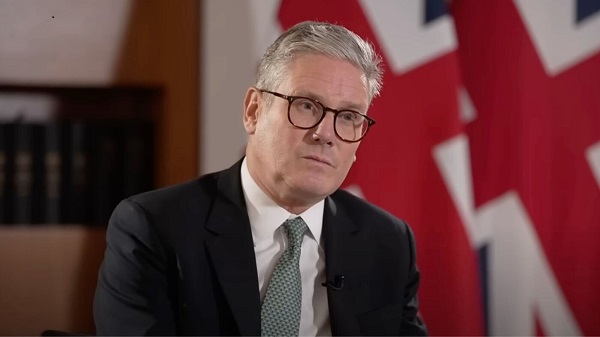Business
Federal government’s latest media bailout another bad idea

From the Fraser Institute
By Matthew Lau
If the value of local radio stations, as measured by how much revenue they generate, is higher than the costs of running those stations, no subsidies are needed to keep them going. Conversely, if the costs are higher than the benefits, it doesn’t make sense to keep those radio stations on the air.
The governmentalization of the news media in Canada continues apace. According to a recent announcement by the Trudeau government, the “CRTC determined that a new temporary fund for commercial radio stations in smaller markets should be created.” Now, radio stations outside of Montreal, Toronto, Vancouver, Calgary, Edmonton and Ottawa-Gatineau will be eligible for taxpayer subsidies.
Clearly a bad idea. Firstly, there’s no obvious market failure the government will solve. If the value of local radio stations, as measured by how much revenue they generate, is higher than the costs of running those stations, no subsidies are needed to keep them going. Conversely, if the costs are higher than the benefits, it doesn’t make sense to keep those radio stations on the air.
The government said the new funding is “temporary” but as economists Milton and Rose Friedman famously observed, “Nothing is so permanent as a temporary government program.” Taxpayers may can reasonably expect that subsidies to local radio news stations will become an ongoing expense instead of a onetime hit to their wallets.
Indeed, the Trudeau government has a history of making temporary or “short-term” costs permanent. Before coming to power in 2015, the Liberals proposed “a modest short-term deficit” of less than $10 billion annually for three years; instead this fiscal year the Trudeau government is running its 10th consecutive budget deficit with the cumulative total of more than $600 billion.
Secondly, the governmentalization of media will likely corrupt it. Here again an observation from Milton Friedman: “Any institution will tend to express its own values and its own ideas… A socialist institution will teach socialist values, not the principles of private enterprise.” Friedman was talking about the public education system, but the observation applies equally to other sectors that the government increasingly exercises control over.
A media outlet that receives significant government funding is less likely to apply healthy skepticism to politicians’ claims of the supposed widespread benefits of their large spending initiatives and disbursements of taxpayer money. The media outlet’s internal culture will naturally lean more heavily towards government control than free enterprise.
Moreover, conflict of interest becomes a serious issue. To the extent that a media outlet gets its revenue from government instead of advertisers and listeners, its customer is the government—and the natural inclination is always to produce content that will appeal to the customer. Radio stations receiving significant government funding will have a harder time covering government in an unbiased way.
Finally, as a general rule, government support for an industry tends to discourage innovation, and radio and other media are no exception. When new companies and new business models enter a sector, the government should not through subsidies try to keep the incumbents afloat.
“The media, like any other business, continually evolves,” noted Lydia Miljan, professor of political science at the University of Windsor and a senior fellow at the Fraser Institute, in a recent essay. “As each innovation enters the market, it displaces audiences for the legacy players. But does that innovation mean we should prop up services that fewer people consume? No. We allow other industries to adapt to new market conditions. Sometimes that means certain industries and companies close. But they are replaced with something else.”
To summarize—there are three major problems with the Trudeau government’s new fund for radio stations. First, it will impose costs on taxpayers that, despite the government’s label, may not be “temporary” and the compensating benefits will be lower than the costs. Second, increased government funding will damage the ability of those radio stations to cover the government with neutrality and healthy skepticism. And third, the new fund will discourage innovation and improvement in the media sector as a whole.
Author:
Business
Crown corporations dish out $190 million in bonuses

The federal government rubberstamped more than $190 million in bonuses to Crown corporations in 2024-25, according to government records obtained by the Canadian Taxpayers Federation.
“Bonuses are for when you do a good job, they shouldn’t be handed out like participation trophies,” said Franco Terrazzano, CTF Federal Director. “Taxpayers can’t afford to bankroll big bonus cheques each and every year for highly paid government executives.
“Here’s a crazy idea: maybe the government should stop handing out bonuses when it’s borrowing tens of billions of dollars every year.”
The records detailing Crown corporation bonuses for 2024-25 were released in response to an order paper question submitted by Conservative member of Parliament Andrew Scheer (Regina-Qu’Appelle).
Crown corporations dished out $190.3 million in bonuses for the last fiscal year, according to the records. The records break down both executive and non-executive bonuses.
The Business Development Bank of Canada issued more bonuses than any other Crown corporation, with its bureaucrats taking home more than $60 million. Every executive took a bonus, with the average executive bonus totalling $216,000, according to the records.
Several failing Crown corporations rubberstamped bonuses.
The Canada Mortgage and Housing Corporation rubberstamped $30.6 million in bonuses last year. Nearly 99 per cent of CMHC executives took a bonus, for an average executive bonus of $42,900, according to the records.
The CMHC has repeatedly claimed it’s “driven by one goal: housing affordability for all.”
In 2024, the Royal Bank of Canada said it was the “toughest time ever to afford a home.” More than 70 per cent of Canadians who do not own a home said “they have given up on ever owning” one, according to polling from Ipsos.
VIA Rail also dished out $11 million in bonuses in 2024-25. The records show 100 per cent of its executives took a bonus last year. The average bonus for VIA Rail executives is $110,000.
VIA Rail’s operating losses totaled $385 million in the most recent year, according to its latest annual report. The government bailed out VIA Rail to the tune of $1.9 billion over the last five years just to cover the train company’s operating losses.
The Canada Infrastructure Bank dished out $8.6 million in bonuses in 2024-25. The records show 83 per cent of its executives took a bonus, for an average executive bonus of $197,000.
“The CIB is not expected to reach its disbursement goals in any sector by 2027-28,” according to the Parliamentary Budget Officer.
In May 2022, the House of Commons Standing Committee on Transport, Infrastructure and Communities tabled a report with only one recommendation: “The Government of Canada abolish the Canada Infrastructure Bank.”
Multiple Crown corporations including Canada Post and the National Capital Commission, did not provide bonus records for 2024-25. Both Crown corporations said they had “nothing to report at this time.”
Federal departments and agencies have yet to provide bonus figures for 2024-25. However, the government rubberstamped more than $1.5 billion in bonuses to bureaucrats employed by federal departments and agencies between 2015 and 2023. The bonuses kept flowing despite the fact that “less than 50 per cent of [performance] targets are consistently met within the same year,” according to the PBO.
Prime Minister Mark Carney is requiring Crown corporations to propose savings of up to 15 per cent of their spending by 2028, according to media reports.
“The first thing on Carney’s chopping block should be taxpayer-funded bonuses,” Terrazzano said. “We need a culture change in Ottawa and that means the government must stop rewarding failure with taxpayers’ money.”
Table: Crown corporations with highest bonuses 2024-25
| Crown corporation | Total bonuses | Executives who got a bonus | Average executive bonus |
| Business Development Bank of Canada |
$60,742,616 |
100% |
$216,093 |
| Export Development Canada |
$45,044,281 |
79% |
$143,323 |
| Canada Mortgage and Housing Corporation |
$30,636,283 |
99% |
$42,982 |
| Royal Canadian Mint |
$12,155,211 |
N/A |
N/A |
| VIA Rail |
$11,031,412 |
100% |
$110,768 |
Business
Canadian gov’t spending on DEI programs exceeds $1 billion since 2016
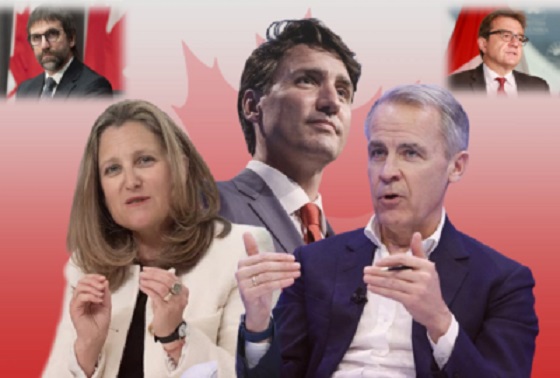
From LifeSiteNews
Some departments failed to provide clear descriptions of how the taxpayer funds were used. For example, Prairies Economic Development Canada spent $190.1 million on projects related to diversity, equity and inclusion ventures but could not provide details.
Federal diversity, equity and inclusion programs have cost Canadian taxpayers more than $1 billion since 2016.
According to information published September 18 by Blacklock’s Reporter, diversity, equity and inclusion (DEI) government grants have totaled $1.049 billion since 2016, including grants for “cultural vegetables.”
A $25 million grant, one of the largest individual grants, was given to the Canadian Gay and Lesbian Chamber of Commerce to “strengthen Canada’s entrepreneurship ecosystem to be more accessible to LGBTQ small businesses.”
The government payouts were distributed among 29 departments, ranging from military to agricultural projects.
The Department of Agriculture spent $90,649 for “harvesting, processing and storage of cultural vegetables to strengthen food security in equity-deserving Black communities” in Ontario.
Some departments failed to provide clear descriptions of how the taxpayer funds were used. For example, Prairies Economic Development Canada spent $190.1 million on projects related to diversity, equity and inclusion ventures but could not provide details.
“PrairiesCan conducted a search in our grants and contributions management system using the keywords ‘equity,’ ‘diversity’ and ‘inclusion,’” the Inquiry said. “Certain projects were included where diversity, equity and inclusion were referenced but may not be the main focus of the project.”
DEI projects are presented as efforts by organizations to promote fair treatment, representation, and access to opportunities for people from varied backgrounds. However, the projects are often little more than LGBT propaganda campaigns funded by the Liberal government.
As LifeSiteNews reported, the University of British Columbia Vancouver campus posted an opening for a research chair position that essentially barred non-homosexual white men from applying for the job.
Additionally, during his short time in office, Liberal Prime Minister Mark Carney has already shown Canadians that he is a staunch supporter of the LGBT agenda after he spent over $2 million in taxpayer funding on LGBT groups during his first week in office.
Canadians have repeatedly appealed to Liberals to end pro-LGBT DEI mandates, particularly within the education system.
As LifeSiteNews previously reported, in June 2024, 40 Canadian university professors appealed to the Liberal government to abandon DEI initiatives in universities, arguing they are both ineffective and harmful to Canadians.
-

 Agriculture24 hours ago
Agriculture24 hours agoOttawa’s EV Gamble Just Cost Canola Farmers Billions
-
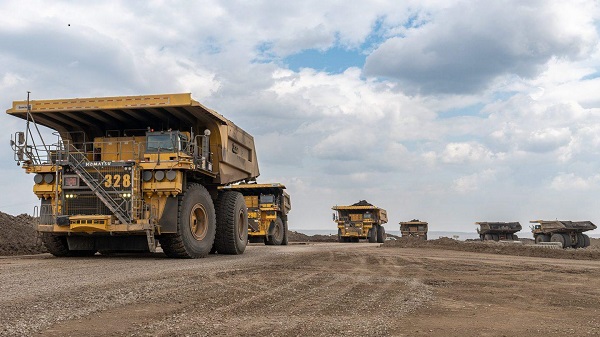
 Alberta2 days ago
Alberta2 days agoHow Alberta is moving to speed up oil sands reclamation with mine water treatment
-

 Business2 days ago
Business2 days agoHow the feds blew your money this week
-

 Health2 days ago
Health2 days agoNearly 200,000 Albertans left an emergency room without treatment last year, finds the MEI
-

 Opinion1 day ago
Opinion1 day agoIt’s payback time as culture war cops switch sides, moral confusion reigns and revenge gets ready to rumble
-

 Business19 hours ago
Business19 hours agoCanadian gov’t spending on DEI programs exceeds $1 billion since 2016
-
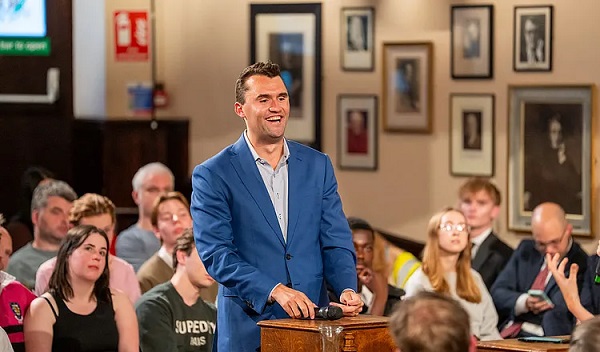
 Frontier Centre for Public Policy19 hours ago
Frontier Centre for Public Policy19 hours agoCharlie Kirk Fought A Progressive Ideology That Punishes Truth
-
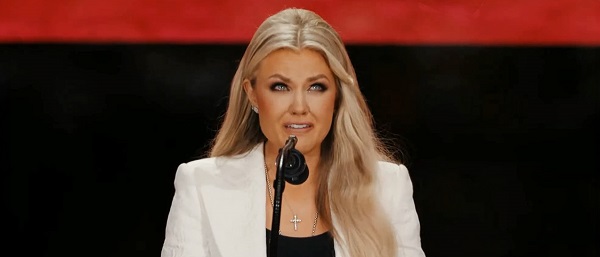
 Crime18 hours ago
Crime18 hours agoCharlie Kirk’s Widow Says She Forgives Her Husband’s Assassin During Memorial


